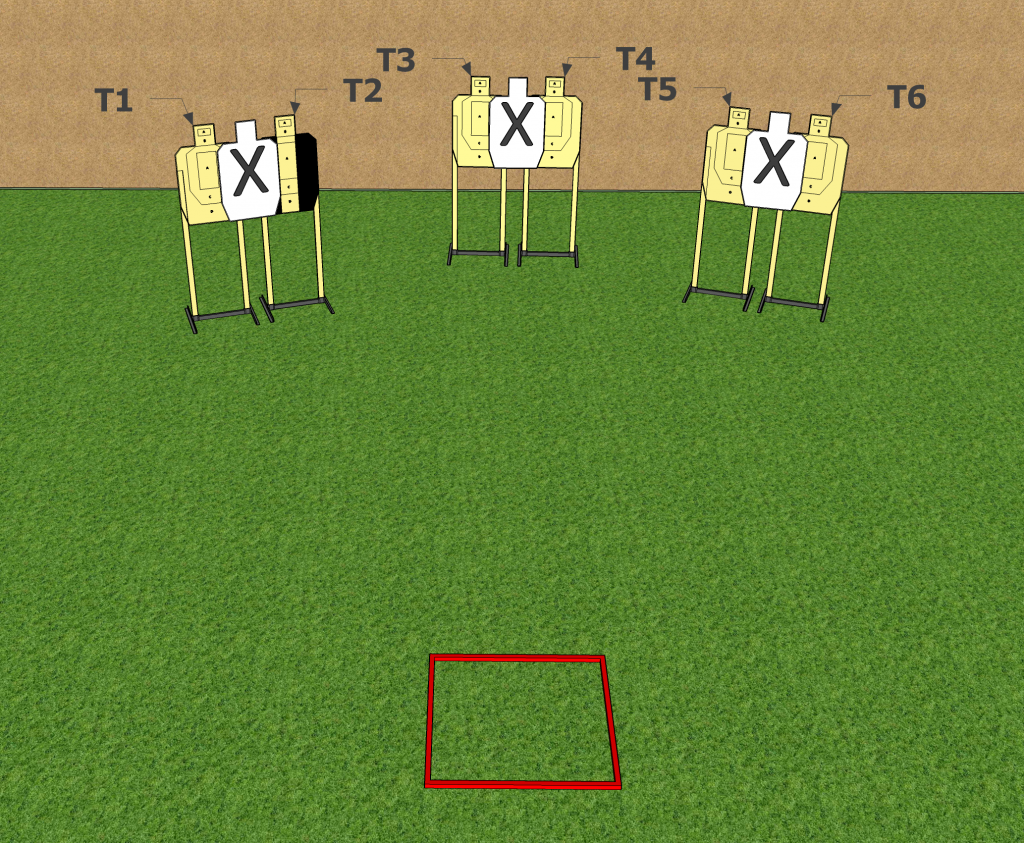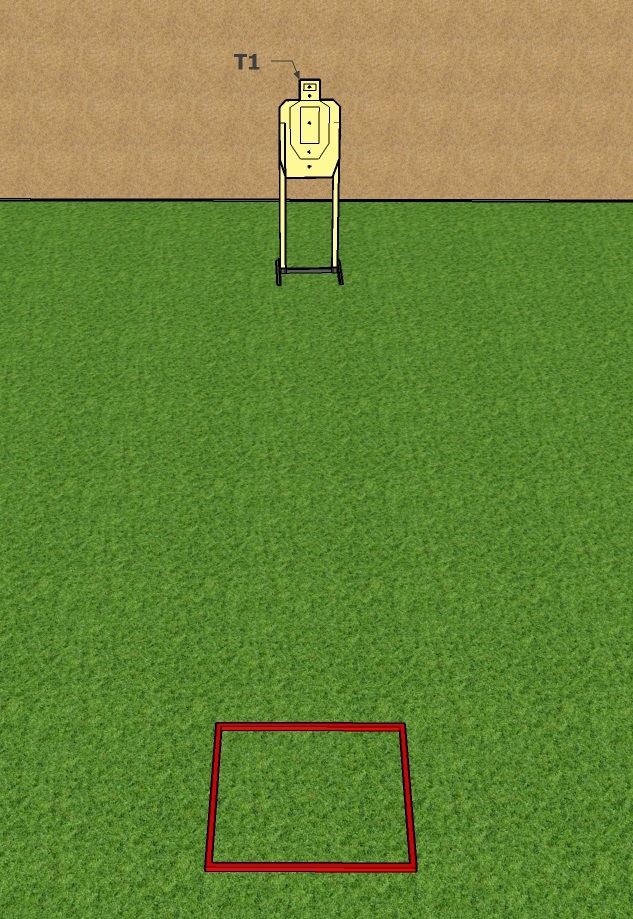We decided to test everyone’s knowledge about Virginia Count penalties in two different scenarios for the March Questions of the Month. A lot of votes were cast on these questions, and now we can see who was correct!

Stage A:
Scoring method: Virginia Count, 12 rounds, best two hits per target will score
Stage procedure: Engage each target with only one round, then perform a mandatory reload, and then re-engage each target with only one round.
What happened: Competitor shoots two rounds at T1 and one round at T2-T6, performs the mandatory reload, and then shoots T1-T6 with one round each.

Stage B:
Scoring method: Virginia Count, 12 rounds, best 12 hits per target will score
Stage procedure: Engage T1 with only six rounds, then perform a mandatory reload, and then re-engage T1 with only six rounds.
What happened: Competitor shoots 7 rounds at T1, performs the mandatory reload, and then shoots T1 with 6 rounds.
For each stage, we asked: How many procedural penalties, if any, would you apply before going downrange to score? Here is how you all answered:
For both stages, the winning answer was “One extra shot penalty”, but it looks like the top answer was not as clear cut for Stage B. Let’s look at the stages and see if the penalty is the same for both stages.
For both of these stages, ideally the competitor will fire six shots, perform the mandatory reload, and then fire six more shots for a total of 12 shots. But, in both scenarios the competitor fired seven shots, did the reload, and fired six more shots for a total of 13 shots. On each stage, the competitor took an extra shot and earned an extra shot penalty per 9.4.5.1. But is there also a penalty for failing to do the reload after six shots?
Has the competitor already been penalized for shooting that extra shot? Can we penalize the competitor twice for the same action? Take a look at 10.2.2.1: “Procedural penalties for failure to comply with stage procedures do not apply to the number of shots fired. Penalties for firing insufficient or additional shots are addressed in other rules and must not be penalized under the provisions of 10.2.2.” This is also known as the “double jeopardy” rule and basically says we have other rules that address too many shots (extra shot and extra hit penalties for VC) and too few shots (miss penalty). As a result, since the competitor has already been assessed an extra shot (and possibly also an extra hit when the targets are scored) penalty, we would not penalize for doing the reload after seven shots versus six.
So when would we penalize for not doing the reload? Let’s say that in Stage B, the competitor fires seven round at T1, performs the reload, and then fires five rounds at T1. There were 12 total shots, so no extra shot penalties can be applied. But, since the reload was done after seven shots versus six, we would apply one procedural per 10.2.4 because the reload was done one shot too late.
What about stacking? In Stage A, what happens if the competitor fires two shots at T1-T3, does the reload, and then engages T4-T6 with two shots each? The shot total is still 12, so no extra shot penalties apply. Yes, you can argue that they didn’t do the reload in the right place, but the more accurate rule is stacking (see 9.4.5.3 and definition of ‘stacked shots’ in App. A3). Since each target was engaged incorrectly, the competitor would earn six procedural penalties, which effectively zeros the stage.
A basic rule of thumb for Virginia Count stages: apply the Virginia Count penalties first, and then if you apply other penalties, determine if you are applying those penalties for the same action. The specific Virginia Count penalties are listed under 9.4.5, and yes a competitor can earn an extra shot and extra hit penalty because double jeopardy does not apply here. But, just because an extra shot occurred, it doesn’t mean that an extra hit will always apply.
If you want to learn more about double jeopardy, check out the post by George Jones. Also remember to visit the blog homepage and vote in the current Question of the Month poll.